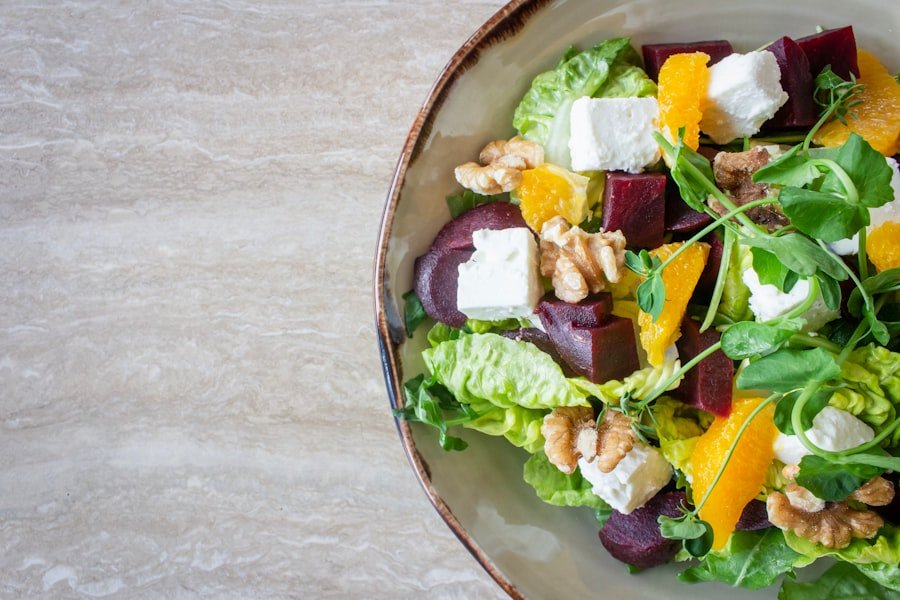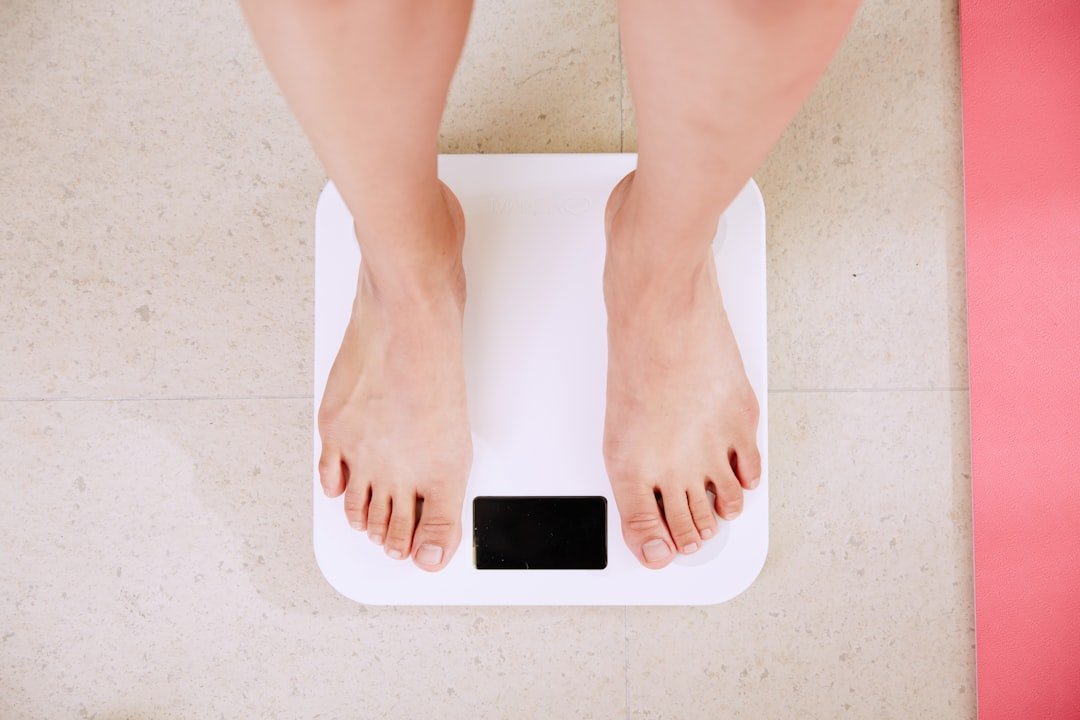Weight loss is a term that refers to the process of reducing body weight, typically through a combination of diet and exercise. The benefits of weight loss are numerous and can have a significant impact on overall health and well-being. Losing excess weight can reduce the risk of chronic diseases such as heart disease, diabetes, and certain types of cancer. It can also improve mental health, increase energy levels, and enhance self-confidence.
Maintaining a healthy weight is important for several reasons. Excess weight can put strain on the body's organs and systems, leading to a higher risk of developing health problems. It can also affect mobility and quality of life. By achieving and maintaining a healthy weight, individuals can improve their overall health and reduce their risk of developing chronic diseases.
Key Takeaways
- Understanding the basics of weight loss is crucial for achieving your goals.
- A balanced diet is essential for effective weight loss.
- Creating a caloric deficit is necessary to lose weight.
- Macronutrients like protein, carbohydrates, and fats play a significant role in weight loss.
- Avoid high-calorie and high-fat foods that can sabotage your weight loss goals.
The Importance of a Balanced Diet for Effective Weight Loss
A balanced diet plays a crucial role in effective weight loss. It involves consuming a variety of foods from different food groups in the right proportions to provide the body with essential nutrients while creating a calorie deficit. A balanced diet should include fruits, vegetables, whole grains, lean proteins, and healthy fats.
A balanced diet offers several benefits for weight loss. Firstly, it provides the body with all the necessary nutrients it needs to function optimally. This helps to prevent nutrient deficiencies that can lead to cravings and overeating. Secondly, a balanced diet helps to regulate blood sugar levels, which can prevent spikes and crashes in energy levels that often lead to unhealthy food choices. Lastly, a balanced diet promotes satiety and helps to control hunger, making it easier to stick to a calorie deficit.
Cutting Calories: How to Create a Caloric Deficit for Weight Loss
Creating a caloric deficit is essential for weight loss. This means consuming fewer calories than the body needs to maintain its current weight. To create a caloric deficit, individuals can either reduce their calorie intake or increase their calorie expenditure through physical activity.
There are several ways to create a caloric deficit. One approach is to track and monitor calorie intake by using a food diary or a mobile app. This allows individuals to become more aware of their eating habits and make adjustments as needed. Another approach is to focus on portion control and mindful eating. By paying attention to portion sizes and eating slowly, individuals can better gauge their hunger and fullness cues, preventing overeating.
Increasing physical activity is another effective way to create a caloric deficit. Engaging in regular exercise can help burn calories and increase metabolism, leading to weight loss. Combining both diet and exercise is often the most effective approach for creating a caloric deficit and achieving sustainable weight loss.
The Role of Macronutrients in Weight Loss: Protein, Carbohydrates, and Fats
Macronutrients, including protein, carbohydrates, and fats, play a crucial role in weight loss. Each macronutrient serves a specific purpose in the body and has different effects on hunger, metabolism, and overall health.
Protein is an essential macronutrient for weight loss. It helps to build and repair tissues, supports muscle growth, and promotes satiety. Including adequate protein in the diet can help preserve lean muscle mass while promoting fat loss. Good sources of protein include lean meats, poultry, fish, eggs, dairy products, legumes, and tofu.
Carbohydrates are the body's primary source of energy. They provide fuel for physical activity and brain function. However, not all carbohydrates are created equal. Choosing complex carbohydrates such as whole grains, fruits, vegetables, and legumes over refined carbohydrates can help regulate blood sugar levels and promote satiety.
Fats are an essential part of a healthy diet but should be consumed in moderation for weight loss. Healthy fats such as those found in avocados, nuts, seeds, and olive oil can provide important nutrients and promote satiety. However, it is important to limit the intake of unhealthy fats found in fried foods, processed snacks, and high-fat dairy products.
Foods to Avoid: High-Calorie and High-Fat Foods that Can Sabotage Your Weight Loss Goals
When trying to lose weight, it is important to avoid certain high-calorie and high-fat foods that can sabotage your weight loss goals. These foods are often low in nutrients and high in calories, making it easy to consume excess calories without feeling satisfied.
Processed foods such as chips, cookies, and sugary snacks should be avoided as they are typically high in added sugars, unhealthy fats, and empty calories. These foods can lead to weight gain and increase the risk of chronic diseases.
Sugar-sweetened beverages such as soda, energy drinks, and fruit juices should also be avoided. These beverages are high in calories and can contribute to weight gain. Instead, opt for water, unsweetened tea, or infused water for hydration.
Fast food and fried foods should be limited or avoided altogether. These foods are often high in unhealthy fats, sodium, and calories. They can contribute to weight gain and increase the risk of heart disease and other health problems.
Foods to Include: Low-Calorie and High-Fiber Foods that Can Help You Lose Weight

Including low-calorie and high-fiber foods in your diet can help with weight loss. These foods are nutrient-dense, meaning they provide a lot of nutrients for relatively few calories. They also help promote satiety and prevent overeating.
Fruits and vegetables are excellent choices for weight loss due to their low calorie and high fiber content. They are also packed with vitamins, minerals, and antioxidants that support overall health. Aim to include a variety of colorful fruits and vegetables in your diet for optimal nutrition.
Whole grains such as brown rice, quinoa, and whole wheat bread are also great choices for weight loss. They are high in fiber, which helps to promote satiety and regulate blood sugar levels. Whole grains are also rich in vitamins, minerals, and antioxidants.
Lean proteins such as chicken breast, turkey, fish, tofu, and legumes are important for weight loss. They help to build and repair tissues, support muscle growth, and promote satiety. Including adequate protein in your diet can help preserve lean muscle mass while promoting fat loss.
Meal Planning: Tips for Creating a Healthy and Balanced Meal Plan for Weight Loss
Meal planning is an essential tool for weight loss. It involves preparing meals and snacks in advance to ensure that healthy and balanced options are readily available. Meal planning can help save time, reduce stress, and prevent impulsive food choices.
When creating a meal plan for weight loss, it is important to focus on nutrient-dense foods that provide a balance of macronutrients. Include a variety of fruits, vegetables, whole grains, lean proteins, and healthy fats in your meals. Aim to include all food groups to ensure you are getting a wide range of nutrients.
Plan your meals and snacks based on your calorie needs and personal preferences. Consider portion sizes and aim to include a balance of protein, carbohydrates, and fats in each meal. Include a source of protein with each meal to promote satiety and muscle growth.
Prepare meals and snacks in advance to make healthy choices more convenient. Cook large batches of meals that can be portioned out and stored in the fridge or freezer for later use. Pre-cut fruits and vegetables for easy snacking options.
Snacking Strategies: Healthy Snacks that Can Help You Stay Full and Satisfied
Healthy snacking is an important part of a weight loss journey. It can help prevent overeating at meals, regulate blood sugar levels, and provide a steady source of energy throughout the day. When choosing snacks, opt for options that are low in calories and high in nutrients.
Fruits and vegetables make excellent snack choices as they are low in calories and high in fiber. They provide important vitamins, minerals, and antioxidants. Cut up fruits and vegetables and keep them readily available for easy snacking.
Nuts and seeds are another great snack option for weight loss. They are high in healthy fats, protein, and fiber, which help promote satiety. However, it is important to practice portion control as nuts and seeds are calorie-dense.
Greek yogurt or cottage cheese with fruit can be a satisfying and protein-rich snack option. These dairy products provide important nutrients such as calcium and probiotics. Opt for plain varieties without added sugars.
Hydration: The Importance of Drinking Enough Water for Weight Loss
Hydration is often overlooked but plays a crucial role in weight loss. Drinking enough water is important for several reasons. Firstly, it helps to regulate appetite and prevent overeating. Often, feelings of hunger are actually signs of thirst. Drinking water can help distinguish between hunger and thirst cues.
Water also helps to boost metabolism and promote fat burning. Staying hydrated ensures that the body's metabolic processes are functioning optimally, leading to more efficient calorie burning.
Additionally, drinking water can help prevent fluid retention and bloating, which can make individuals feel heavier than they actually are. It also aids in digestion and helps to flush out toxins from the body.
The recommended daily intake of water varies depending on factors such as age, sex, activity level, and climate. As a general guideline, aim to drink at least 8 cups (64 ounces) of water per day. However, individual needs may vary, so it is important to listen to your body's thirst cues and drink accordingly.
Staying Motivated and Consistent on Your Weight Loss Journey
Staying motivated and consistent on a weight loss journey can be challenging, but it is essential for long-term success. Here are some tips to help you stay on track:
1. Set realistic goals: Set achievable goals that are specific, measurable, attainable, relevant, and time-bound (SMART). Break your larger goal into smaller, more manageable milestones.
2. Find your motivation: Identify your reasons for wanting to lose weight and remind yourself of them regularly. Whether it's improving your health, increasing your energy levels, or fitting into your favorite clothes, keep your motivation at the forefront of your mind.
3. Surround yourself with support: Seek support from friends, family, or a support group. Having a support system can provide encouragement, accountability, and motivation.
4. Track your progress: Keep track of your weight loss progress by weighing yourself regularly or taking measurements. Celebrate small victories along the way to stay motivated.
5. Practice self-care: Take care of yourself physically and mentally. Get enough sleep, manage stress levels, and engage in activities that bring you joy and relaxation.
6. Be flexible: Understand that weight loss is not always linear and that there may be ups and downs along the way. Be flexible with your approach and make adjustments as needed.
7. Stay committed: Remember that weight loss is a journey, not a destination. Stay committed to your goals and make healthy choices consistently.
By following these tips and staying committed to your weight loss goals, you can achieve sustainable results and improve your overall health and well-being. Remember that every small step counts and that consistency is key.
If you're looking to shed some pounds, it's important to not only focus on your diet but also incorporate physical activity into your routine. In fact, choosing the right martial art can be a great way to burn calories and tone your body. The Ultimate Guide to Choosing the Right Martial Art for You provides valuable insights into various martial arts styles and helps you determine which one suits your fitness goals and preferences. Whether you're interested in kickboxing, karate, or jiu-jitsu, this article will help you make an informed decision. So why not combine your weight loss journey with a fun and empowering martial arts practice? Check out this informative article here to get started!
FAQs
What is the recommended amount of weight loss per week?
The recommended amount of weight loss per week is 1-2 pounds.
Is it safe to lose 5 pounds in a week?
Losing 5 pounds in a week is not recommended as it can be unsafe and may lead to health complications.
What foods should I eat to lose weight?
Foods that are high in protein, fiber, and healthy fats can help with weight loss. Examples include lean meats, vegetables, fruits, nuts, and whole grains.
Should I cut out carbs to lose weight?
Cutting out carbs completely is not necessary for weight loss. However, reducing intake of refined carbs and increasing intake of complex carbs can be beneficial.
How much water should I drink to aid in weight loss?
Drinking at least 8 glasses of water per day can aid in weight loss by keeping you hydrated and helping to flush out toxins.
Should I exercise to lose weight?
Exercise can aid in weight loss by burning calories and building muscle. It is recommended to engage in at least 30 minutes of moderate exercise per day.
Are there any foods I should avoid to lose weight?
Foods high in sugar, saturated fats, and processed foods should be avoided or limited to aid in weight loss.













